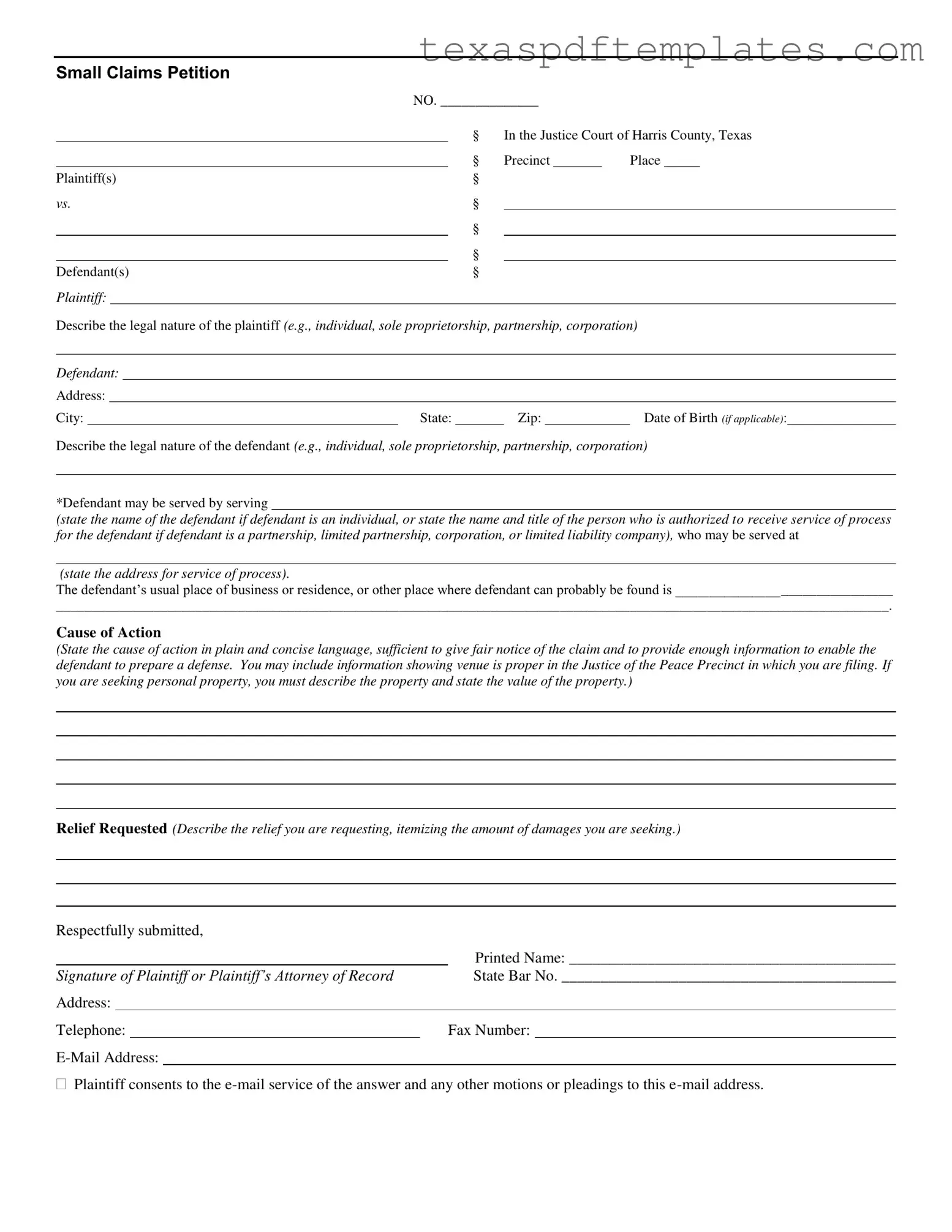SMALL CLAIMS PETITION
|
NO. ______________ |
|
|
|
|
|
|
§ |
In the Justice Court of Harris County, Texas |
|
|
§ |
Precinct |
|
Place |
|
|
Plaintiff(s) |
§ |
|
|
|
|
|
vs. |
§ |
|
|
|
|
|
|
|
§ |
|
|
|
|
|
|
|
§ |
|
|
|
|
|
Defendant(s) |
§ |
|
|
|
|
|
Plaintiff:
Describe the legal nature of the plaintiff (e.g., individual, sole proprietorship, partnership, corporation)
Defendant:
Address:
City: |
|
State: |
|
Zip: |
|
Date of Birth (if applicable): |
Describe the legal nature of the defendant (e.g., individual, sole proprietorship, partnership, corporation)
*Defendant may be served by serving
(state the name of the defendant if defendant is an individual, or state the name and title of the person who is authorized to receive service of process for the defendant if defendant is a partnership, limited partnership, corporation, or limited liability company), who may be served at
(state the address for service of process).
The defendant’s usual place of business or residence, or other place where defendant can probably be found is _______________________________
_______________________________________________________________________________________________________________________.
Cause of Action
(State the cause of action in plain and concise language, sufficient to give fair notice of the claim and to provide enough information to enable the defendant to prepare a defense. You may include information showing venue is proper in the Justice of the Peace Precinct in which you are filing. If you are seeking personal property, you must describe the property and state the value of the property.)
Relief Requested (Describe the relief you are requesting, itemizing the amount of damages you are seeking.)
Respectfully submitted, |
|
|
|
|
|
|
|
Printed Name: __________________________________________ |
Signature of Plaintiff or Plaintiff’s Attorney of Record |
State Bar No. ___________________________________________ |
Address: |
|
|
|
Telephone: |
|
|
Fax Number: |
|
E-Mail Address: |
|
|
|
Plaintiff consents to the e-mail service of the answer and any other motions or pleadings to this e-mail address.

